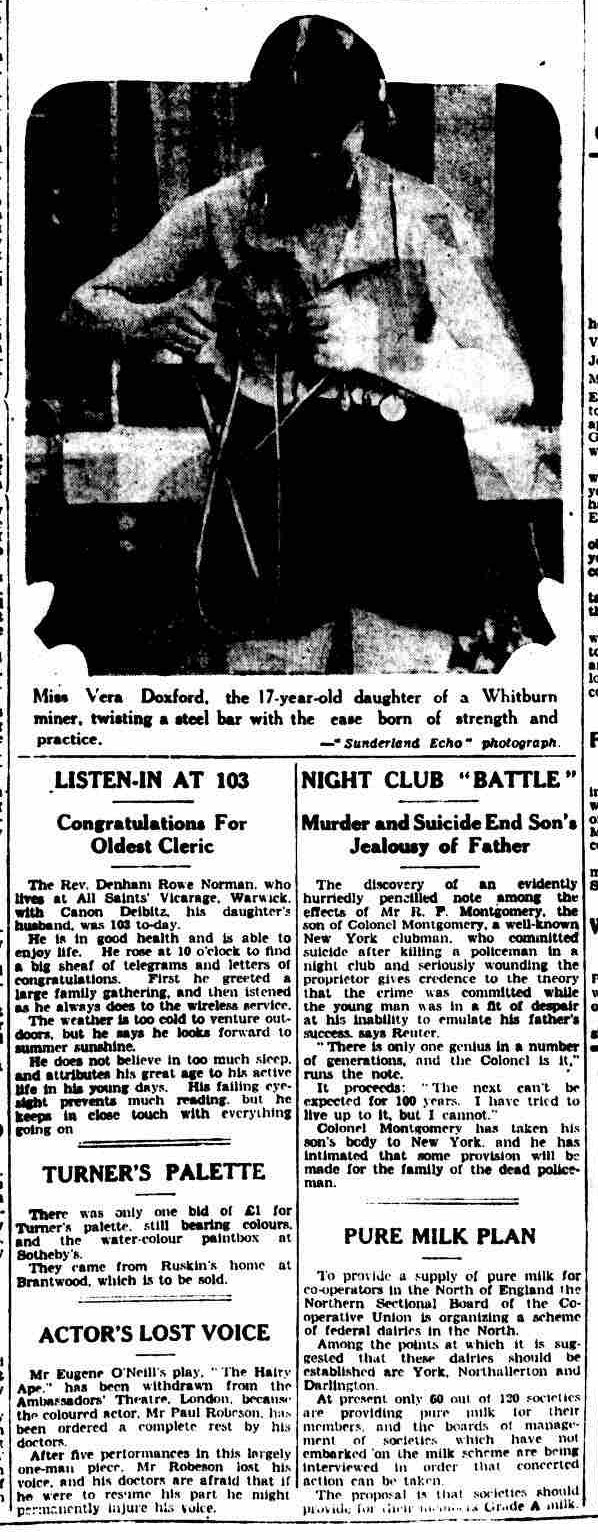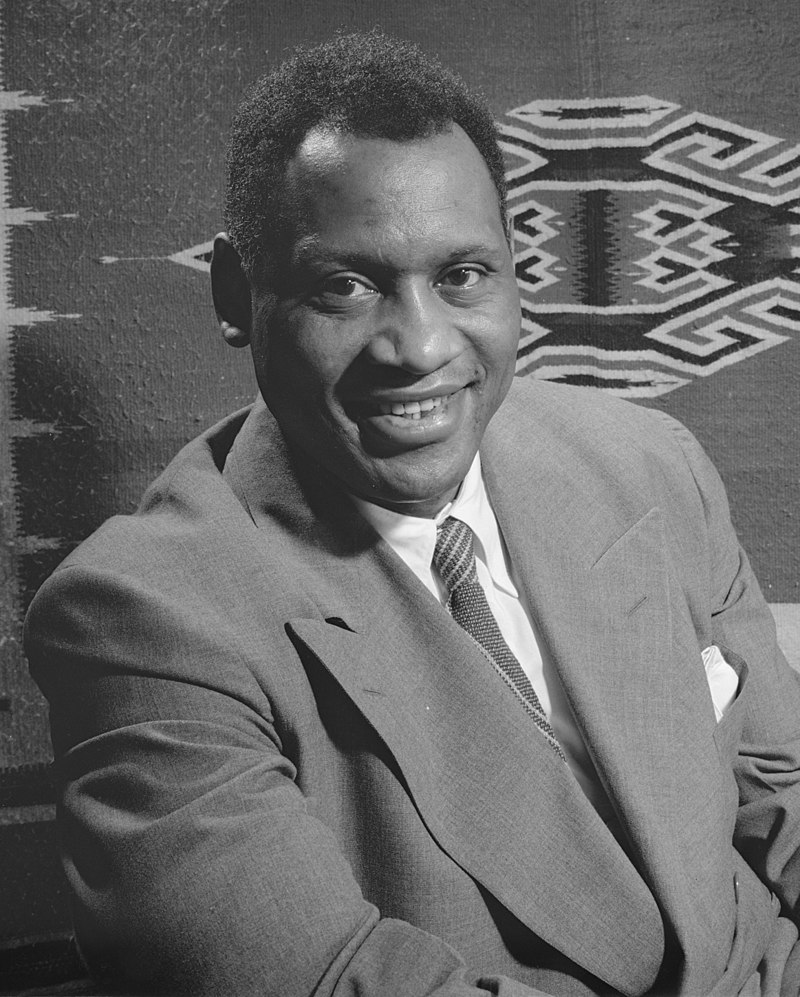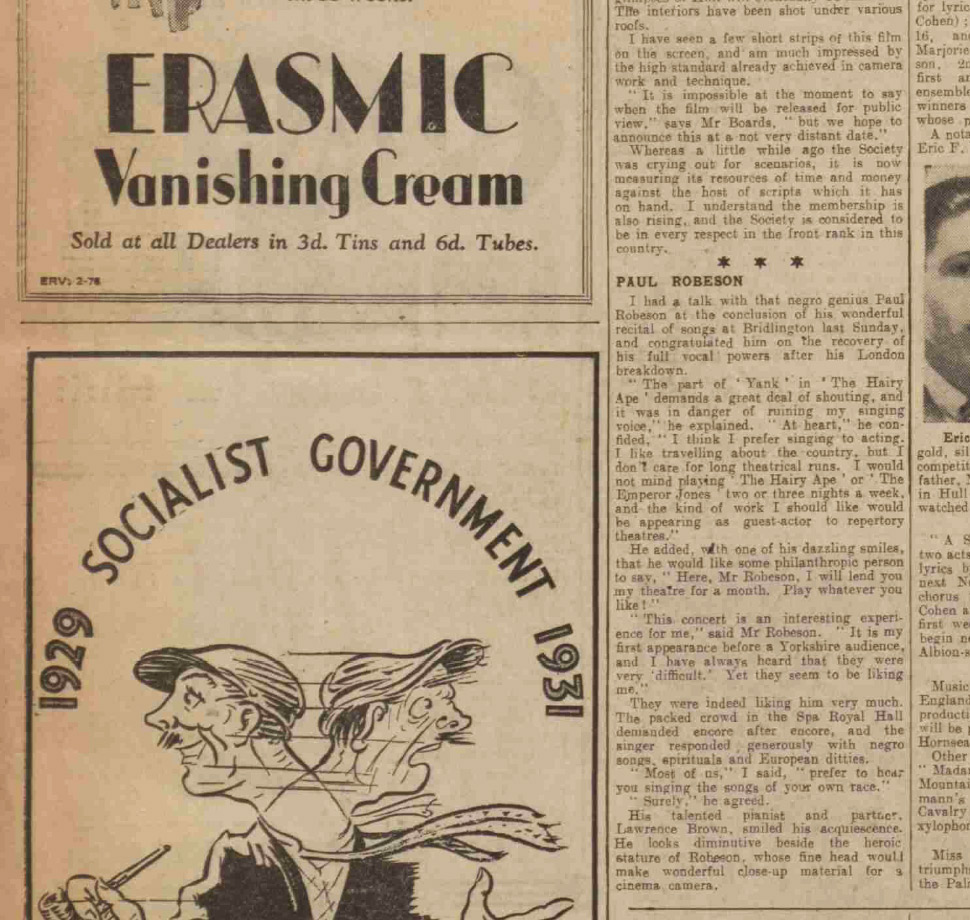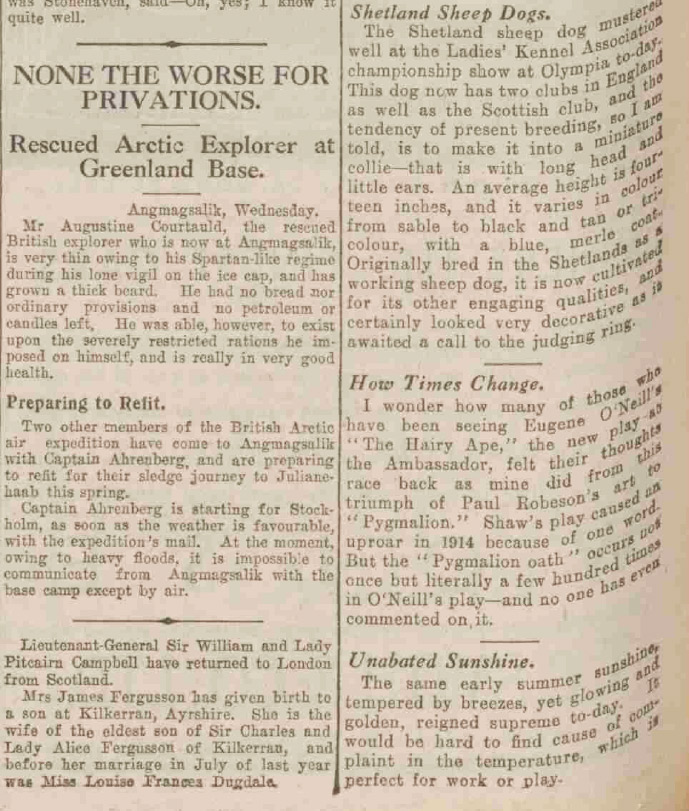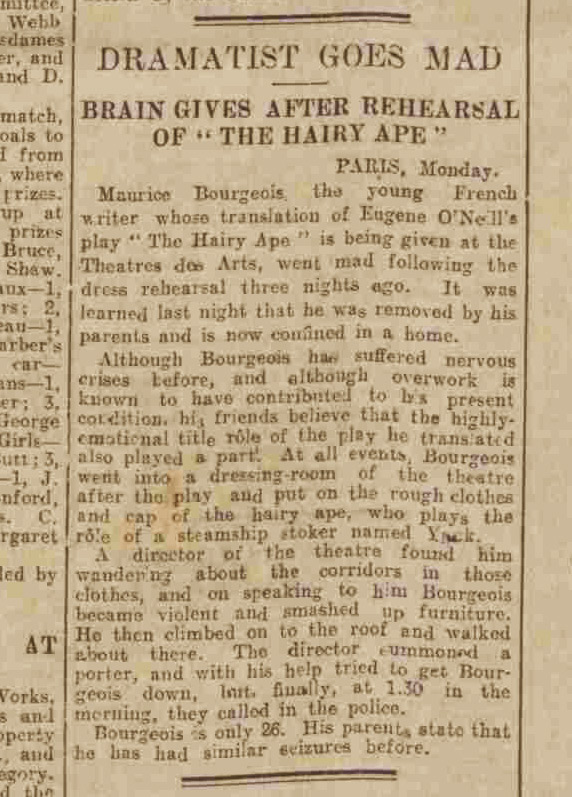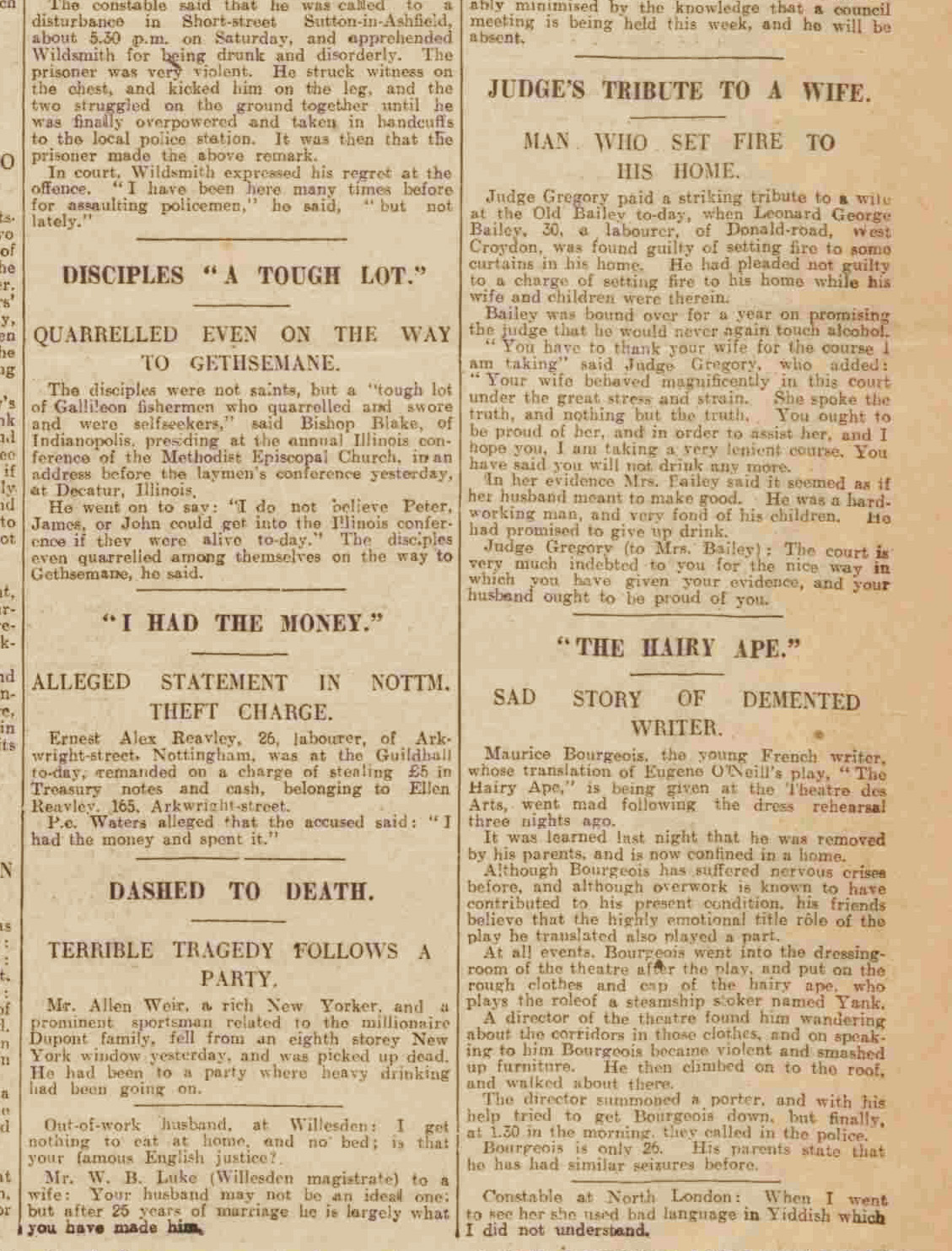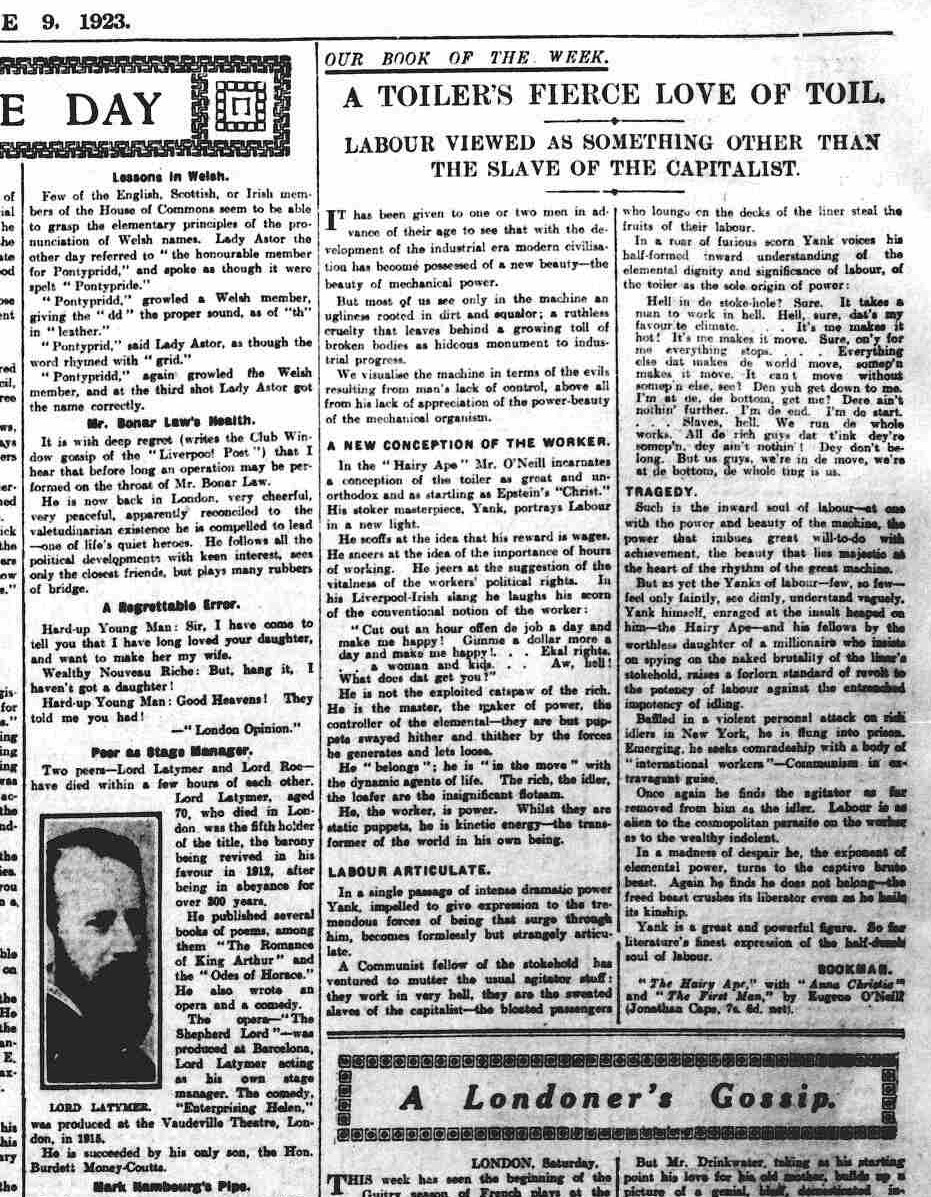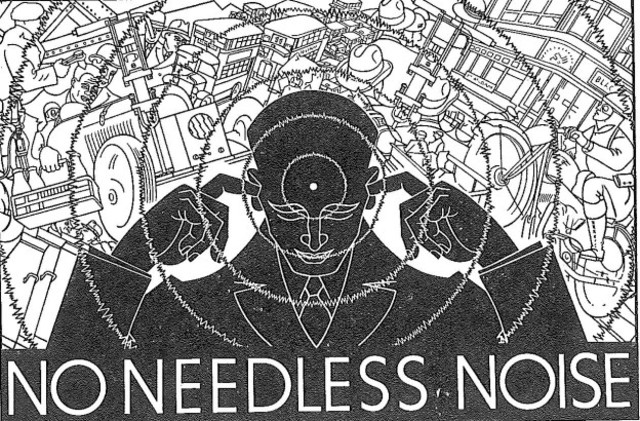
I spent autumn 2015 in the studio, theatre and rehearsal room, composing sound and music for a new production of Eugene O’Neill’s Expressionist masterpiece The Hairy Ape (1922). At The Old Vic, London, directed by Richard Jones.
It was fascinating to be asked to work on this revivial, as the invitation arrived in a month where I was also collaborating with the Science Museum, London, on a long-term research project Noise, Music and Silence. Among many other themes, this project examines people’s responses to industrialisation in the interwar period. This includes music composed to echo or counterpoint the sounds of the industrial age (for instance Russolo’s intonarumori). Musical responses to industrialisation, the atomisation of labour and the dehumanisation of the worker are topics I also touched on in this TEDx talk: Loving The Machine. As I’ve been developing sounds over the last few weeks, memories of these threads of research have been colliding with thoughts about the sonic content of the show. Perhaps Yank’s percussive language, delivered in stacatto sentences, can be thought of as yet another echo of the machine. Perhaps there is also something Gilbrithean in the stoking sequence in scene 3 of the play.
I was also fascinated to know more about the sonic history of this show that requires actors to work with an intense and overpowering underscore. This experiential approach to the noise and shock of modernity seems to be an intentional element of the play. It doesn’t come without its technical complications: actors can become fatigued rehearsing and performing this material. If a soundscape is truly overwhelming, as it would be in the stokehole of a 1920s steamship, there are also issues of intelligibility to consider. If you mic up actors or duck the sound around their vocal frequencies, you boost intelligiblity but take the edge off the sonic drama of the scene. Curious to know more about how this was originally approached and how the play was received in the interwar period, I searched the British Newspaper Archive for early accounts of the play. Although the clippings don’t yield many clues about the soundscore itself (apart from the fact that Yank seemed to shout a lot), they’re nonetheless a fascinating read:
Funded by the AHRC, Noise, Music and Silence was a collaboration between the Science Museum, Royal College of Music and University of Nottingham. The chief investigators are Aleks Kolkowski (composer) and Tim Boon (chief curator, Science Museum).
